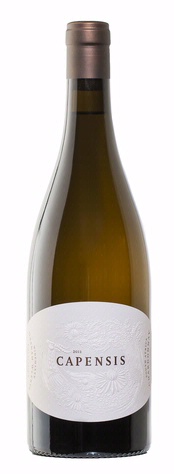Capensis, Western Cape (South Africa) Chardonnay 2013 (Sovereign Wine Imports, $80): Some wine professionals who respect the role of history and tradition in wine production are inclined to quibble at the thought of a world-class wine that emerges almost overnight, whether that wine be from Napa Valley, Barossa Valley or the Tuscan coast. But the  wine itself can make skeptics into believers — especially when the back-story involves plenty of legitimate talent.
wine itself can make skeptics into believers — especially when the back-story involves plenty of legitimate talent.
Capensis Chardonnay from South Africa is my case-in-point. The Capensis project began in 2012 and the first release is from the 2013 vintage. The goal was to create a single wine, a world-class Chardonnay whose fruit is sourced from “unique, extreme sites all over the Western Cape,” according to winemaker Graham Weerts. The commitment behind Capensis deepened in 2014 when the owners of the wine’s primary vineyard — the Fijnbosch estate in Stellenbosch — put the property up for sale. Barbara Banke, chairman of Jackson Family Wines, and Antony Beck, director of South Africa’s Graham Beck Wines, jointly purchased the Fijnbosch property, thus securing their key grape supply. Most of the grapes for Capensis Chardonnay — 60 percent of them in the 2013 vintage — therefore now are estate-grown.
Fijnbosch Vineyard sits at 1720 feet elevation in the Stellenbosch region, and includes steep hillside terrain. The remainder of the grapes come equally from the Kaaimansgat Vineyard in the Overberg region, which sits at 2483 feet altitude, and the E. Bruwer Vineyard in the Robertson region, at 570 feet, which features pockets of limestone soil. The inspiration behind this grape sourcing is that of Rosa Kruger, South Africa’s most acclaimed viticulturalist, who plays an ongoing role in the Capensis project.
Winemaking responsibilities at Capensis fall to Graham Weerts, a Cape Town native whose work has taken him from South Africa to Bordeaux to Sonoma County, back to South Africa and then back to California, this time as winemaker for the Jackson family’s Stonestreet winery and ultimately the overseer of winemaking operations for several Jackson Family Wines properties. He continues those responsibilities along with his new work for Capensis.
The $80 price tag of Capensis Chardonnay and the lofty ambitions of those involved in the project set our expectations high for the taste of the wine, and the wine did not disappoint. It is a dry, full-bodied but somewhat reticent Chardonnay, tightly knit with concentrated fresh fruit and firmly structured with high acidity. Aromas and flavors suggest white peach, apple, pear, honey, vanilla, and notes of chalky minerality; the vivid fruit notes are those of succulent, fresh fruits and they carry long into the finish of the wine. The wine’s texture is creamy, but its acidity causes sparks to fly in your mouth, leaving an impression of juicy richness combined with freshness and cleanness.
While some oak is evident in the wine, it is certainly not intrusive. Slightly more than half the wine was barrel-fermented in all-new French oak barrels followed by one year of development in oak; the remainder of the wine fermented in stainless steel. About 40 percent of the wine underwent malolactic fermentation. Plans for future vintages are to ferment more of the wine in oak, but to use less new oak: ideally about 80 percent barrel-fermented, but only 40 percent of that in new oak.
Capensis is a Chardonnay thoroughbred, taking an authoritative lead right out of the gate. It is perfectly delicious and approachable now, but I can see it evolving beautifully over ten years.
